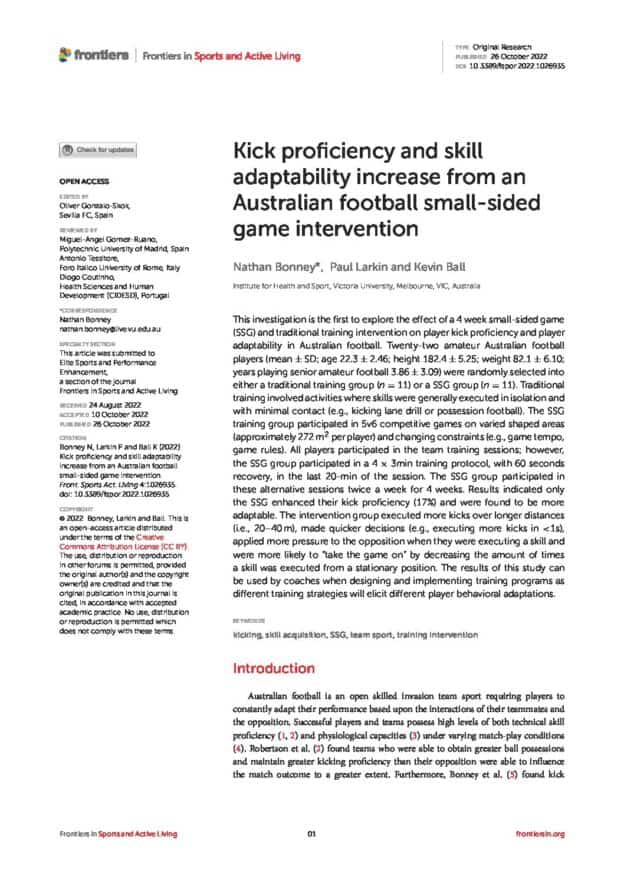Abstract
This investigation is the first to explore the effect of a four week small-sided game (SSG) and traditional training intervention on player kick proficiency and player adaptability in Australian football.
Twenty-two amateur Australian football players (mean ± SD; age 22.3 ± 2.46; height 182.4 ± 5.25; weight 82.1 ± 6.10; years playing senior amateur football 3.86 ± 3.09) were randomly selected into either a traditional training group (n = 11) or a SSG group (n = 11).
Traditional training involved activities where skills were generally executed in isolation and with minimal contact (e.g., kicking lane drill or possession football). The SSG training group participated in 5v6 competitive games on varied shaped areas (approximately 272m2 per player) and changing constraints (e.g., game tempo, game rules).
All players participated in the team training sessions; however, the SSG group participated in a 4x3min training protocol, with 60 seconds recovery, in the last 20-minutes of the session. The SSG group participated in these alternative sessions twice a week for four weeks.
Results indicated only the SSG enhanced their kick proficiency (17%) and were found to be more adaptable. The intervention group executed more kicks over longer distances (i.e., 20-40m), made quicker decisions (e.g., executing more kicks in <1s), applied more pressure to the opposition when they were executing a skill and were more likely to ‘take the game on’ by decreasing the amount of times a skill was executed from a stationary position.
The results of this study can be used by coaches when designing and implementing training programs as different training strategies will elicit different player behavioural adaptations.



Responses